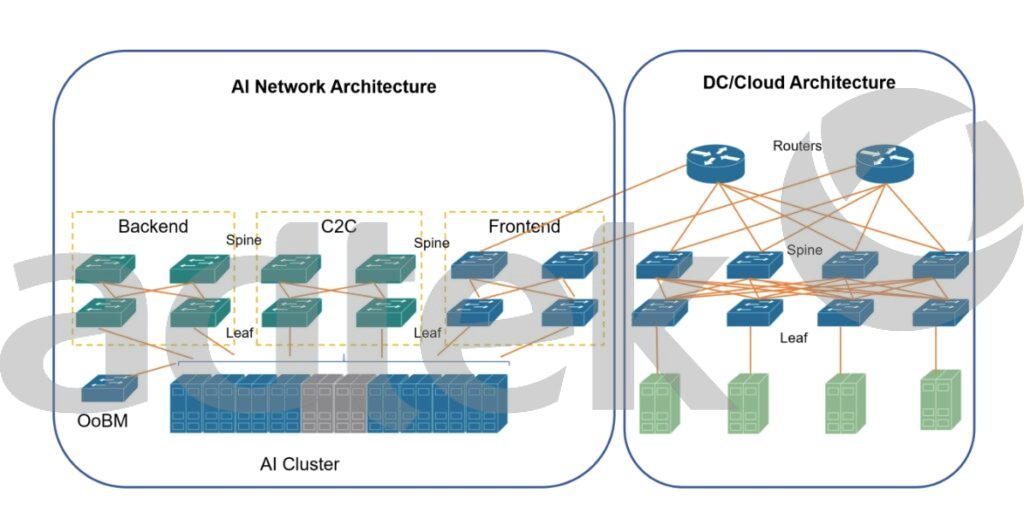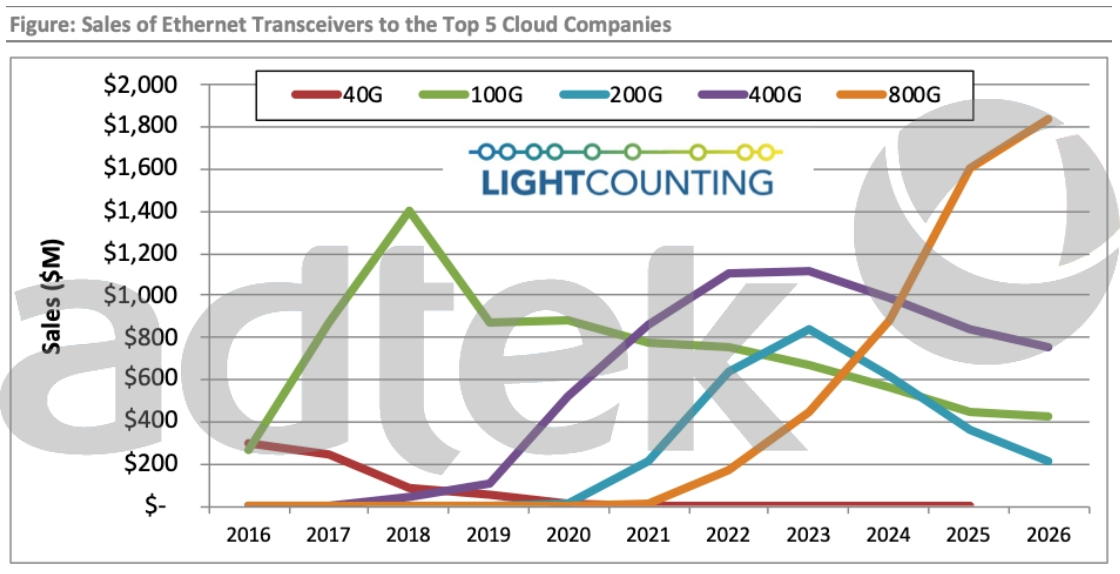
The last couple of months there has been a lot of noise about the expected boom of 400Gb, 800Gb and 1.6Tb in the next 2-3 years. Yet it seems only yesterday we made the jump of 40Gb to 100Gb. Similar with latency where requirements increased from us to ms, yet latency in some of my latest project, related to the gateways to the cloud, was in ms. And I thought we were quite advanced in these things, was I so wrong or behind in my assumptions?

Figure 1: 2021 Lightcounting study on transceiver speed market growth


So yes you have to start thinking in your structured cabling design about has to migration to 800Gb and above, but don’t expect a shock change in the next 2 years, this will follow probably the same time trajectory as the previous generations. Which structured cabling supports which data center speeds, how a AI network architecture looks like and much more will be covered in our DC Handbook which we will release in a few weeks.
If you want to know more about us, you can fill out the form to contact us and we will answer your questions at any time.
We use cookies to improve your experience on our site. By using our site, you consent to cookies.
Manage your cookie preferences below:
Essential cookies enable basic functions and are necessary for the proper function of the website.
These cookies are needed for adding comments on this website.
These cookies are used for managing login functionality on this website.
Statistics cookies collect information anonymously. This information helps us understand how visitors use our website.
Google Analytics is a powerful tool that tracks and analyzes website traffic for informed marketing decisions.
Service URL: policies.google.com (opens in a new window)
Clarity is a web analytics service that tracks and reports website traffic.
Service URL: clarity.microsoft.com (opens in a new window)
You can find more information in our Cookie Policy and Privacy Policy for ADTEK.